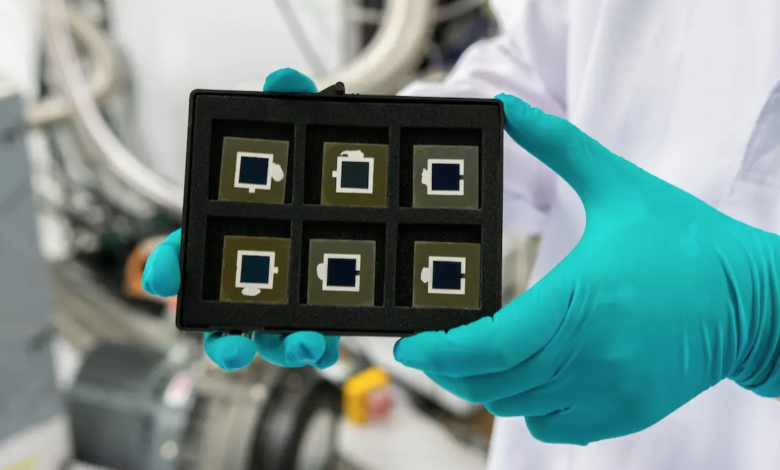Tandem triple junction solar cells set a new record

A pinch of cyanate gives perovskites a boost
– For multi-junction photovoltaic is time for new records. This time it is the National University of Singapore (NUS), where a group of researchers has created tandem triple junction solar cells in perovskite and silicon with the highest level of efficiency ever achieved. A 27.1 percent also certified by an independent laboratory. To achieve this value, the team designed and incorporated into the tandem architecture a new perovskite cell integrated with cyanate, an anion with chemical properties similar to those of halides.
“Surprisingly, after 15 years of ongoing research in the field of perovskite-based solar cells, This work constitutes the first experimental test of the inclusion of cyanate in perovskites to increase the stability of its structure and improve the efficiency of energy conversion“, said Prof. Hou Yi who led the NUS group.
Triple junction tandem solar cells, a huge potential
After the results achieved in the field of double junction, tandem triple junction solar cells represent the new frontier. And the reason is all in the numbers. For the coupled silicon-perovskites, a theoretical efficiency of over 50%. In other words, on paper, this technology would be able to convert half the incident light into electricity without the need for concentrators.
However, turning theory into reality remains an undertaking. One of the most challenging challenges in this segment is being able to minimize voltage loss when the perovskite band gap is increased over 1.90 ev for use in the triple junction. But even scaling results without compromising efficiency and stability seems arduous.
read also Semi-transparent Solar Cells: record efficiency at 21.68%
The new solar cell of the NSU
NSU scientists in collaboration with colleagues at the Solar Energy Research Institute of Singapore (SERIS) solved the first problem by experimenting with cyanate, a new pseudohalide, as a substitute for bromide, an ion of the halide group commonly used in synthetic perovskites. The tests showed that perovskite-based photovoltaic cells with cyanate can reach a voltage of 1.422 volts higher than the 1.357 volts of conventional ones, with a significant reduction in energy loss.
The researchers tested it by running it continuously at full power for 300 hours under controlled conditions. The experiment did not affect its stability and the cell was shown to retain even more than 96% of its initial efficiency.
Encouraged by the performance achieved, the group took their discovery to the next step, using it to assemble a triple perovskite/Si tandem solar cell. The researchers first stacked a “traditional” perovskite and a silicon unit to create a double junction half cell; then they connected the half cell to the new perovskite cell integrated with cyanate. Thus achieving the record efficiency of 27.62% (certified 27.10%) on a solar absorption area of 1 square cm. Looking to the future, the team aims to extend this technology to larger modules without compromising efficiency or stability. Future research will focus on innovations in perovskite interfaces and composition. Their revolutionary discovery was published in Nature.





